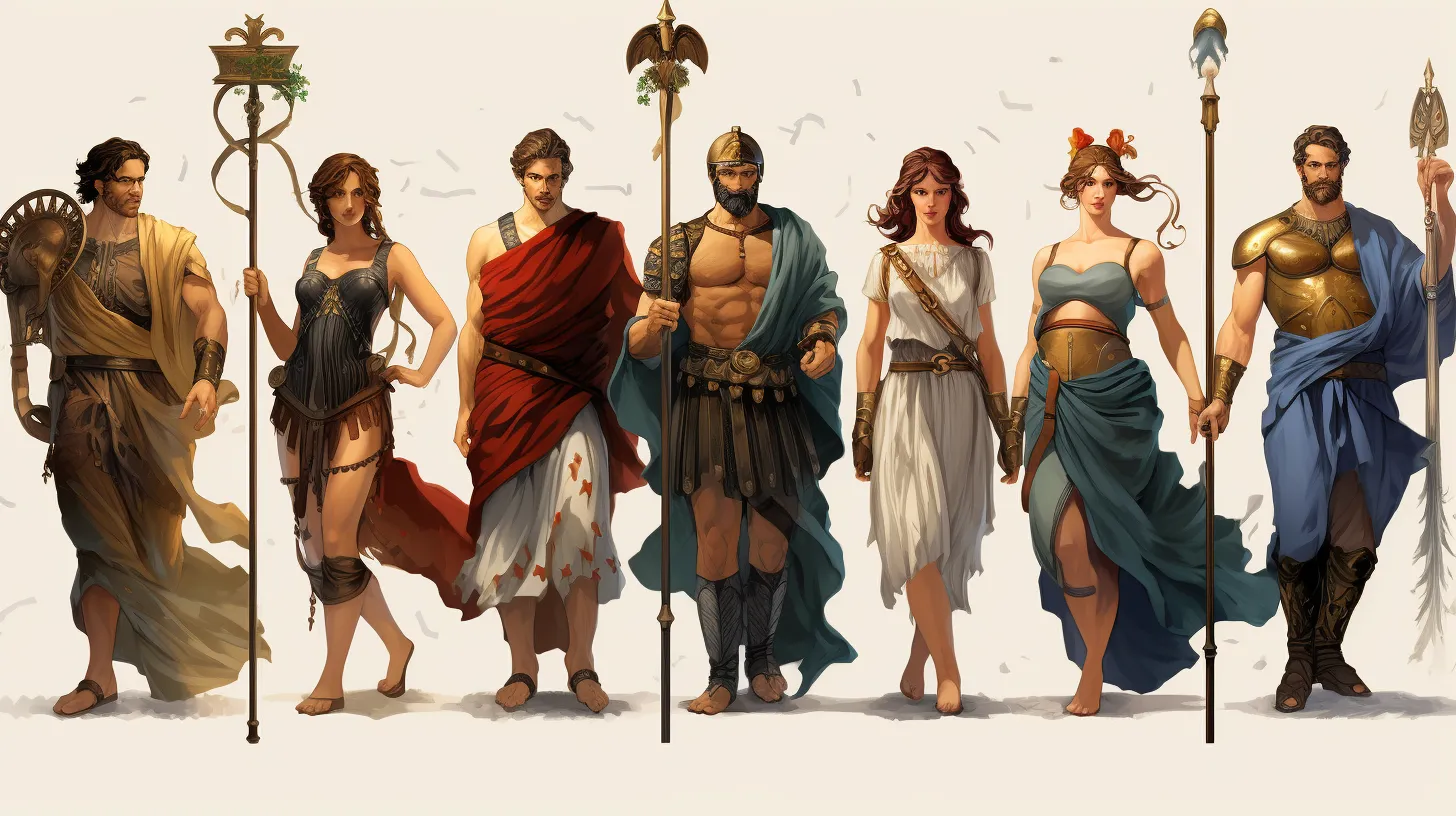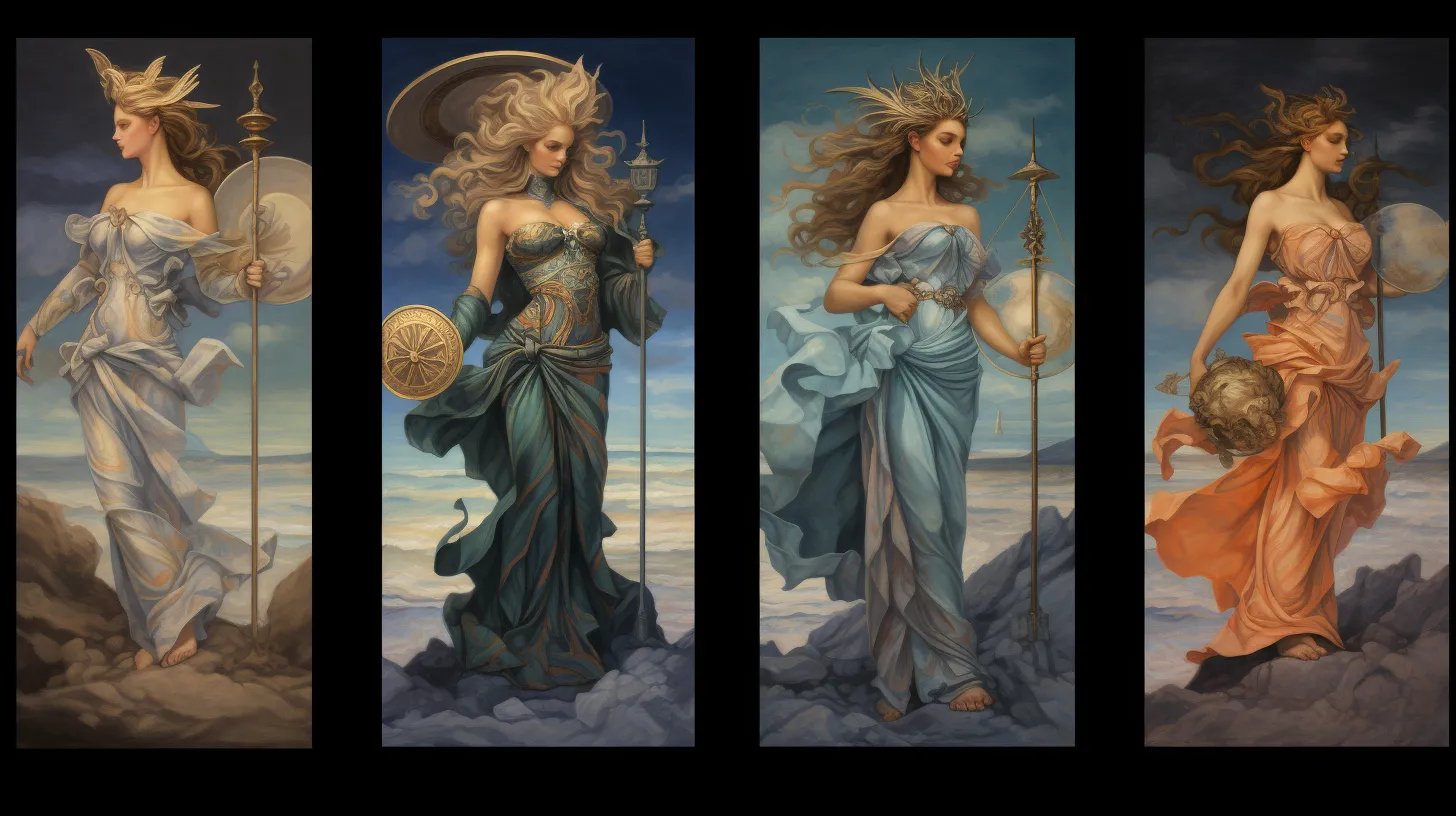Have you ever come across the saying ‘youth is wasted on the young’? In the tales of Greek mythology, Hebe is the living representation of perpetual youth. Yet, her narrative is much more than what meets the eye.
How did Hebe transition from being the gods’ cupbearer to becoming the celebrated goddess of youth and, unexpectedly, a wife as well? Her transformation sheds light on the roles expected of young women in ancient Greece.
This piece examines Hebe’s story, from her initial role as a servant to her eventual union with the hero Hercules, and provides insights into her emblematic role for brides and the enduring symbol of youthful optimism.
Let’s take a closer look at Hebe’s fascinating tale, about a character who proves that phrase wrong by taking destiny into her own hands.
‘To remain forever young is an impossible dream, but in the stories of Hebe, the Greeks found a divine figure who captured the spirit of perpetual youth and the hope it represents.’
Hebe’s Role and Transition
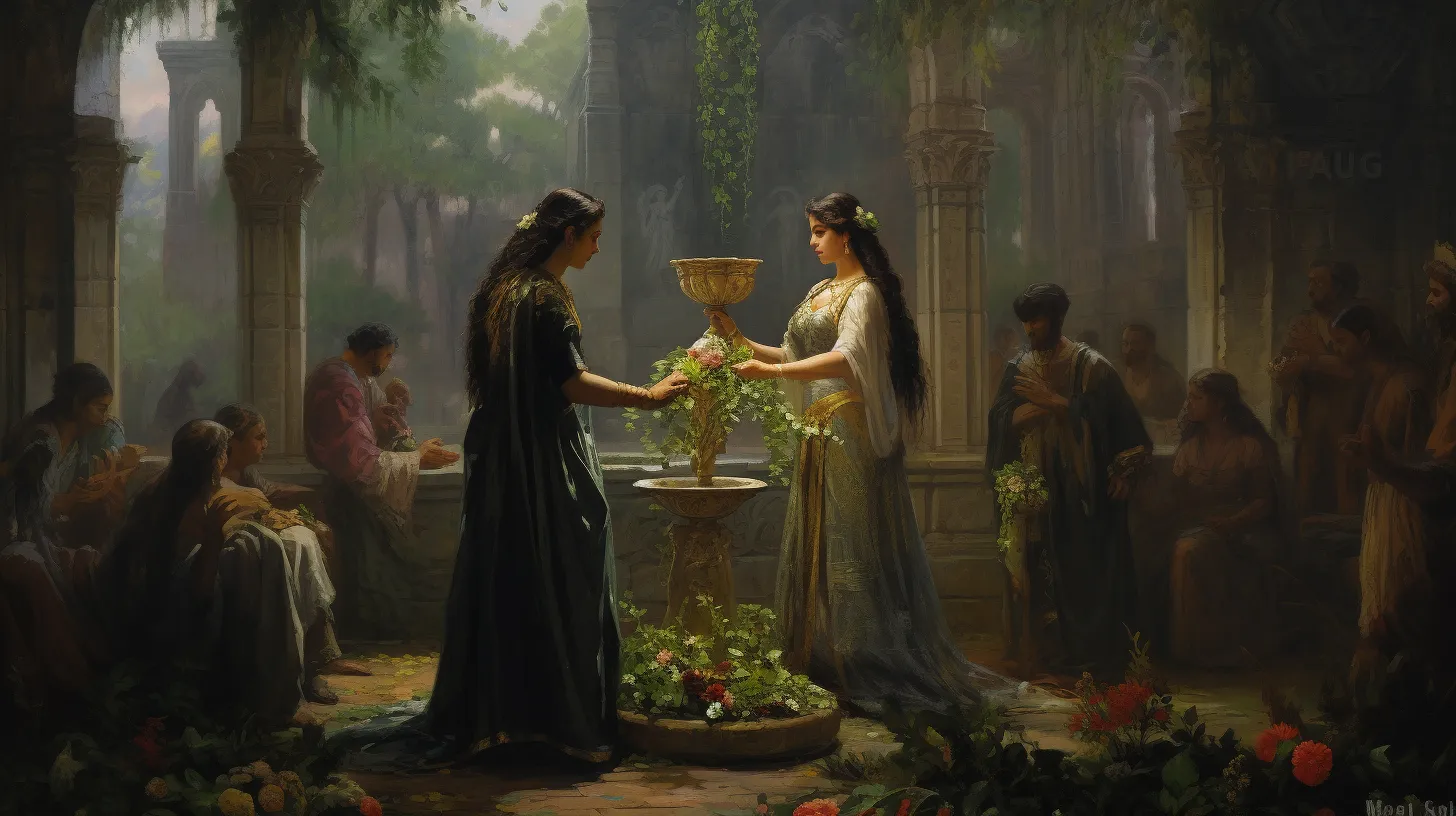
Hebe’s transition from a maiden serving as the cupbearer of the gods to a married woman and goddess of youth represented a significant shift in her role and duties within Greek mythology.
As the former cupbearer, Hebe was responsible for bestowing eternal youth upon the gods.
When she became the goddess of youth and bride, her role evolved to represent a younger form of marriage compared to her mother, Hera.
This shift impacted the representation of marriage and youthfulness in Greek mythology, as Hebe now symbolized the idealized youthful bride, full of hope and optimism.
Her transformation not only altered her responsibilities but also made her relatable to young women, symbolizing the optimism and hopefulness of a new bride.
This portrayal of Hebe influenced the perceptions of marriage and youth in ancient Greek society, as it highlighted the importance of youthfulness and the role of a young bride in Greek culture.
Hebe’s Responsibilities and Symbolism
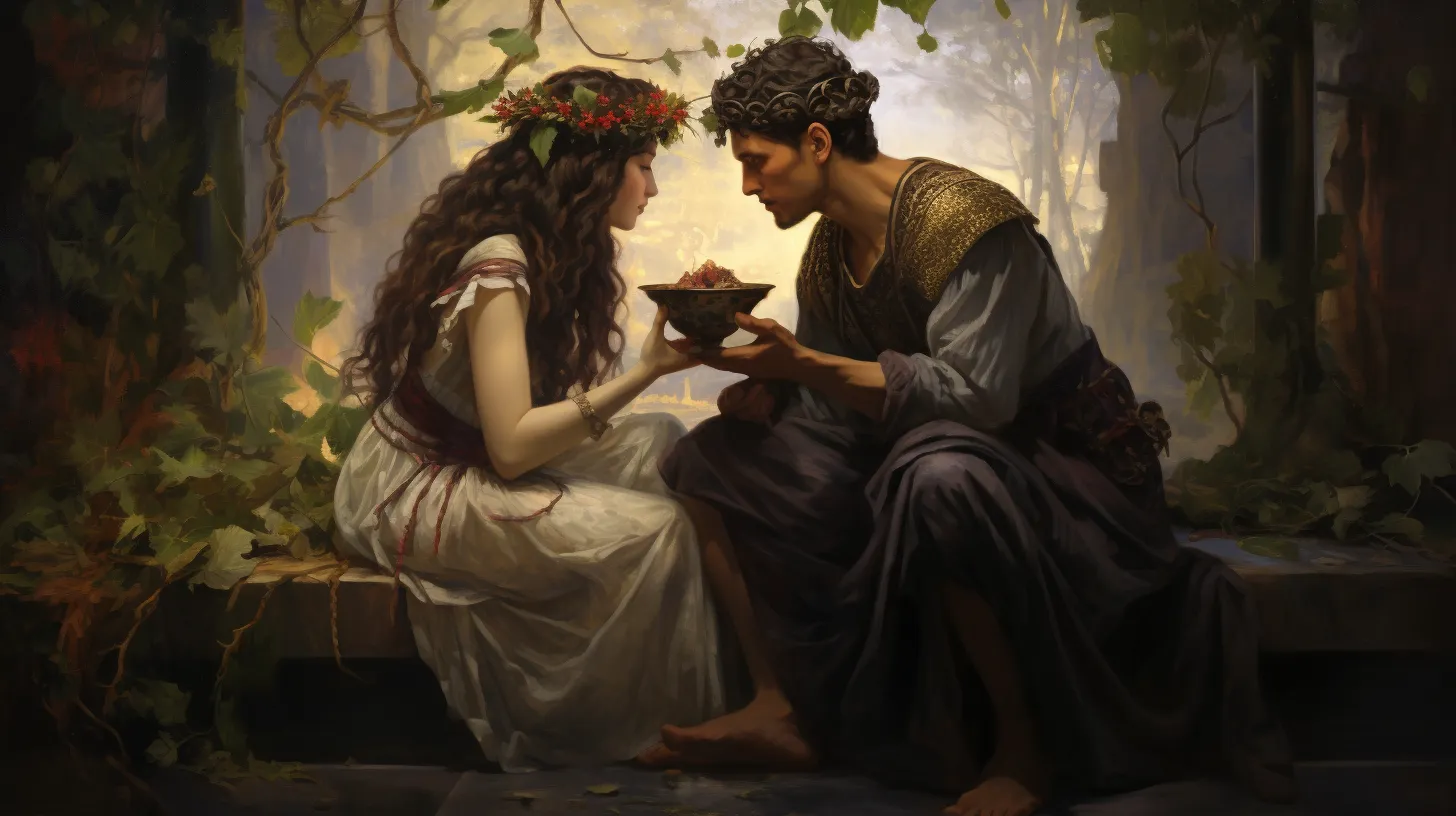
Continuing from the previous subtopic, the transition in Hebe’s role from cupbearer to goddess of youth and bride significantly impacted her responsibilities and symbolism within Greek mythology.
-
Hebe’s role as the cupbearer and its significance in Greek mythology
-
The symbolism of Hebe’s transition from a maiden to a married woman
-
Hebe’s newfound position as the goddess of youth and brides
-
The representation of youthful hopefulness and optimism in marriage
-
Hebe’s relatability to young women and the idealized version of a peaceful union with Hercules
Hebe’s evolution from a maiden fulfilling her duties as a cupbearer to a married woman and goddess brought about a shift in her significance and symbolism. Her representation as the giver of eternal youth and her role as the symbol of youthful hope in marriage resonated with the experiences and aspirations of young women, making her a relatable and inspiring figure in Greek mythology.
Hebe’s Marriage With Hercules
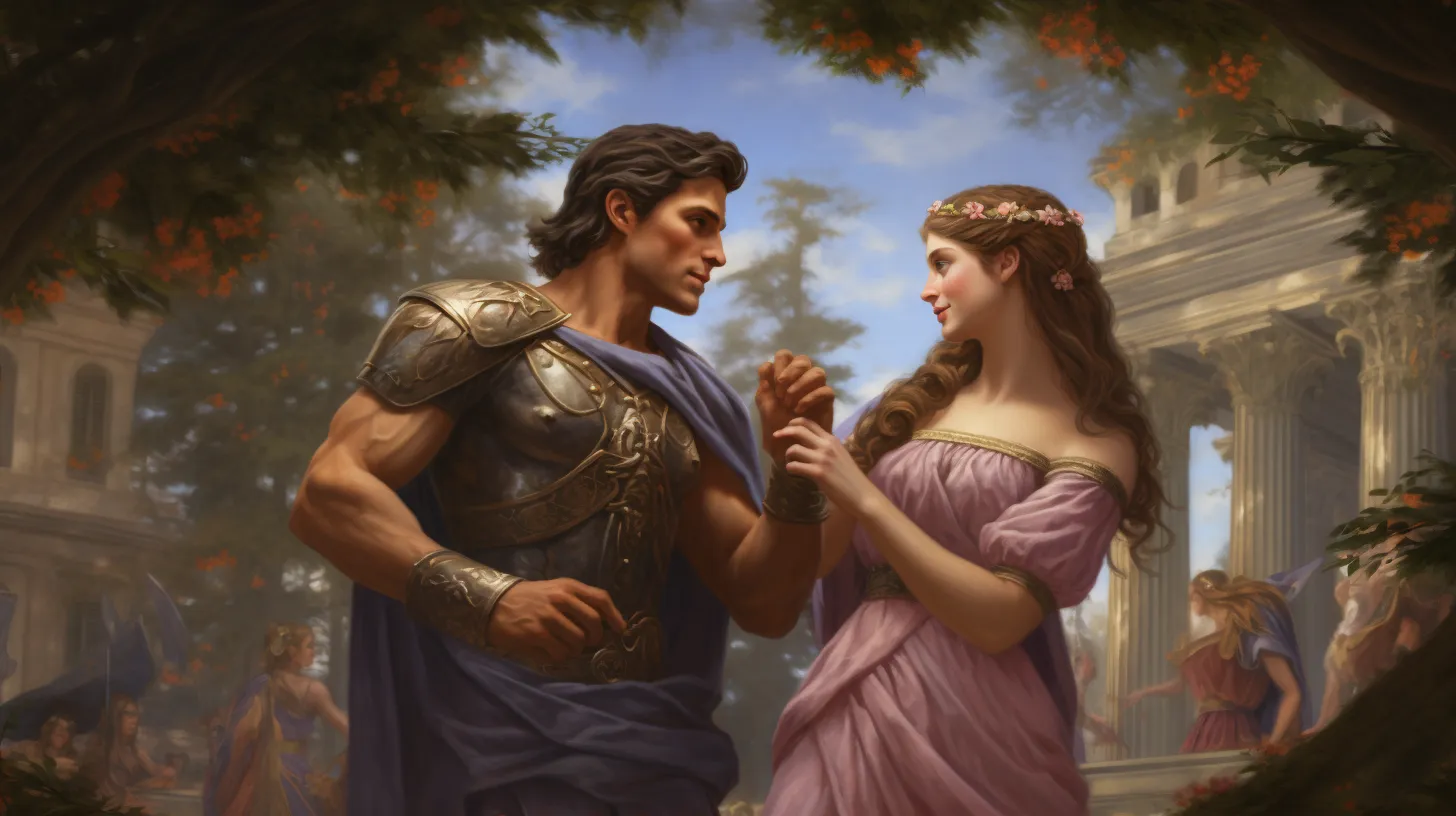
After marrying Hercules, Hebe’s role and status in Greek mythology underwent a significant transformation. The significance of Hebe’s marriage in Greek mythology is profound. As the goddess of youth, her marriage symbolized the transition from maidenhood to married life, reflecting the aspirations and realities of young women.
The impact of her marriage on her role as the goddess of youth was twofold. Firstly, her duties as the cupbearer of the gods were passed on to Ganymede, signifying her shift from a maiden to a married woman. Secondly, Hebe became the goddess of brides, offering hope to young women for a peaceful and happy married life.
The portrayal of Hebe and Hercules’ marriage as an idealized version of a peaceful and happy union added a layer of optimism and joy to her image as a bride, resonating with the aspirations of young women.
Hebe’s Representation of Youthful Hope
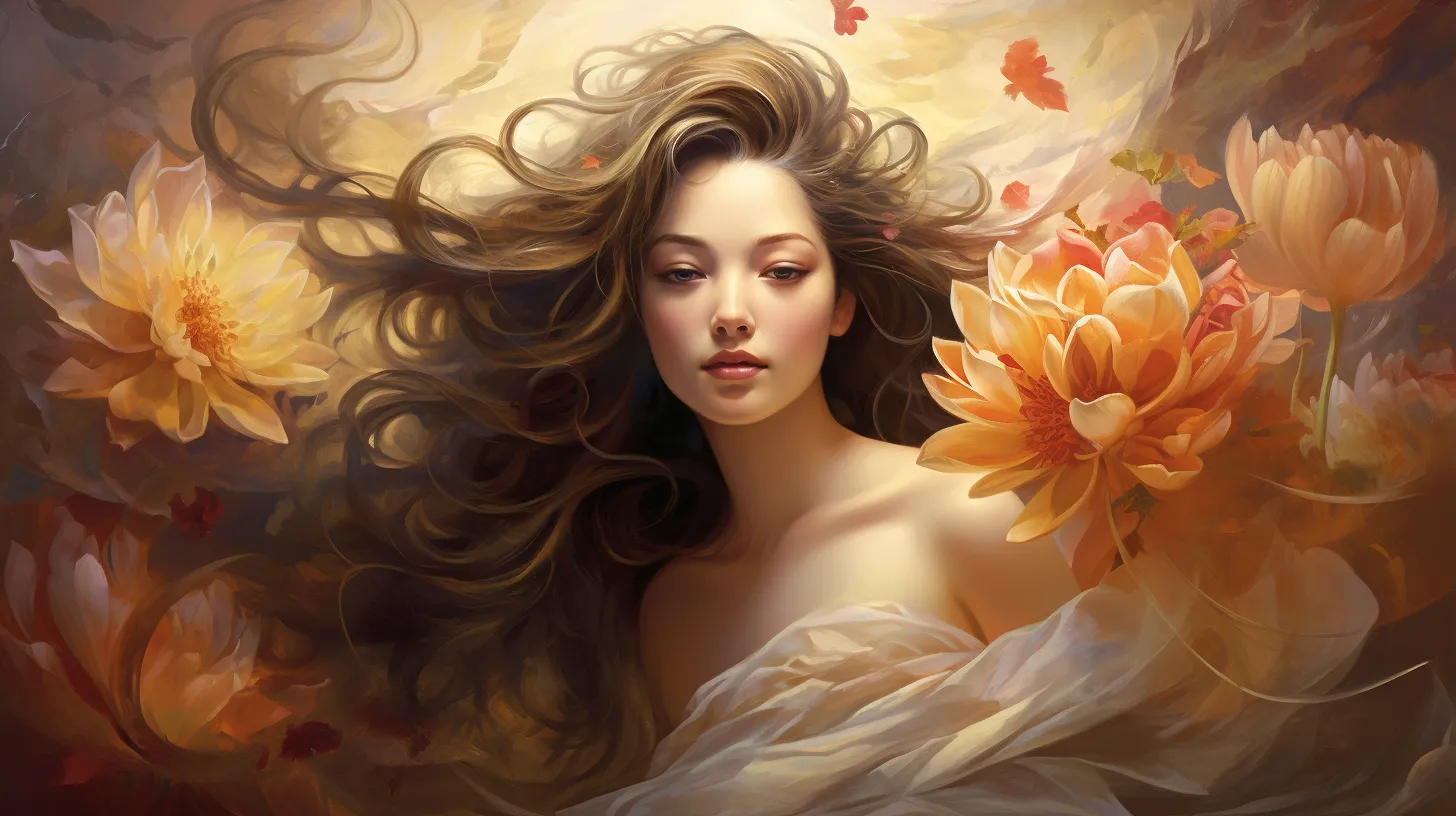
As the goddess of youth, Hebe embodies the unfading optimism and aspirations of young women. Her representation of youthful hopefulness in Greek mythology is significant, influencing the dreams and desires of young women for generations. Some key points to consider about Hebe’s impact on young women’s aspirations and the significance of her eternal youth in Greek mythology include:
- How did Hebe’s youthful optimism symbolize hope for young women?
- What role did Hebe’s eternal youth play in shaping the aspirations of young women?
In Greek mythology, Hebe’s eternal youth represented the endless possibilities and potential of young women. Her vibrant and energetic nature symbolized the hope and optimism that young women often possess. By embodying these qualities, Hebe became a source of inspiration for young women, encouraging them to pursue their dreams and embrace their youthful spirit.
- In what ways did Hebe’s transition from a maiden to a bride inspire hope and optimism in young women?
- How did Hebe’s marriage with Hercules reflect the youthful ideals of a peaceful and happy union for young women?
Hebe’s transition from a maiden to a bride symbolized a significant milestone in a young woman’s life. It represented the possibility of finding love and creating a happy union. Her marriage with Hercules, a strong and heroic figure, reflected the youthful ideals of a peaceful and harmonious partnership. This portrayal of a successful and fulfilling marriage inspired hope and optimism in young women, showing them that love and happiness were attainable goals.
- What lasting impact did Hebe’s representation of youthful hope have on the perceptions and aspirations of young women in Greek mythology and beyond?
Hebe’s representation of youthful hope had a lasting impact on the perceptions and aspirations of young women in Greek mythology and beyond.
Her depiction as the goddess of youth and the embodiment of youthful optimism influenced how young women viewed themselves and their potential.
Hebe served as a reminder that youth is a time of limitless possibilities and that young women should embrace their dreams and aspirations.
This message resonated with young women throughout history, inspiring them to pursue their goals and believe in their abilities. Hebe’s representation continues to inspire and empower young women to this day.
Hebe’s Duties as a Handmaiden
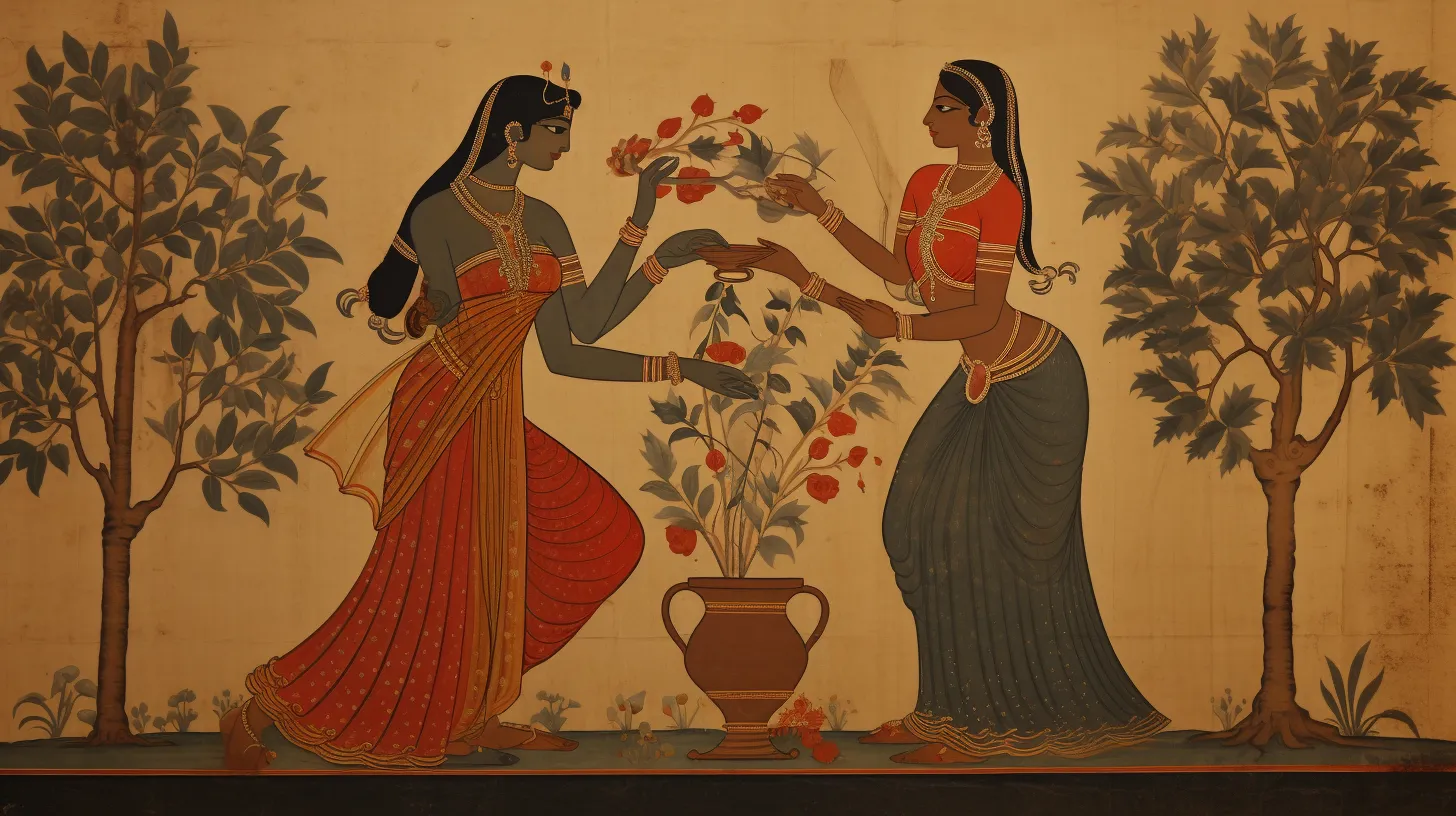
Hebe fulfilled her duties as a handmaiden by serving her mother, Hera, with unwavering dedication and grace. As a noblewoman in ancient Greece, Hebe’s role as a handmaiden wasn’t only a demonstration of filial piety but also a reflection of her status within noble households.
Her relationship with her mother, Hera, was one of respect and devotion, as she assisted Hera in various tasks and accompanied her as a companion. In this capacity, Hebe exemplified the traditional responsibilities of young women in noble households, highlighting the importance of familial duty and service.
Through her role as a handmaiden, Hebe embodied the virtues of loyalty and humility, setting an example for young women in aristocratic circles.
Hebe’s Significance as a Goddess of Brides

Hebe’s significance as a goddess of brides reflects her role as a symbol of youthful hope and the promise of a joyful married life. Her influence on young women can be seen through the symbolism of marriage and the ideals associated with it. But how exactly does Hebe embody these concepts and impact the lives of young women aspiring for a blissful union?
Consider the following aspects:
-
Symbol of Youthful Optimism: Hebe represents the youthful optimism and joy that young brides bring to their marriages, inspiring hope for a happy and peaceful life together.
-
Promise of Everlasting Beauty: As the bestower of eternal youth and vigor, Hebe symbolizes the promise of everlasting beauty and vitality within the union.
-
Idealized Vision of Marriage: Hebe’s marriage to Hercules provides an idealized vision of a harmonious and fulfilling union, offering a model for young brides to aspire to.
-
Representation of Freedom and Joy: Her image as a bride symbolizes the joy and freedom experienced before the realities of marriage set in, serving as a source of inspiration for young women.
-
Hope for a Bright Future: Hebe’s role as the goddess of brides instills hope in young women for a joyful and promising future as they embark on their marital journey.
Nomia: Lesser-Known Nymph
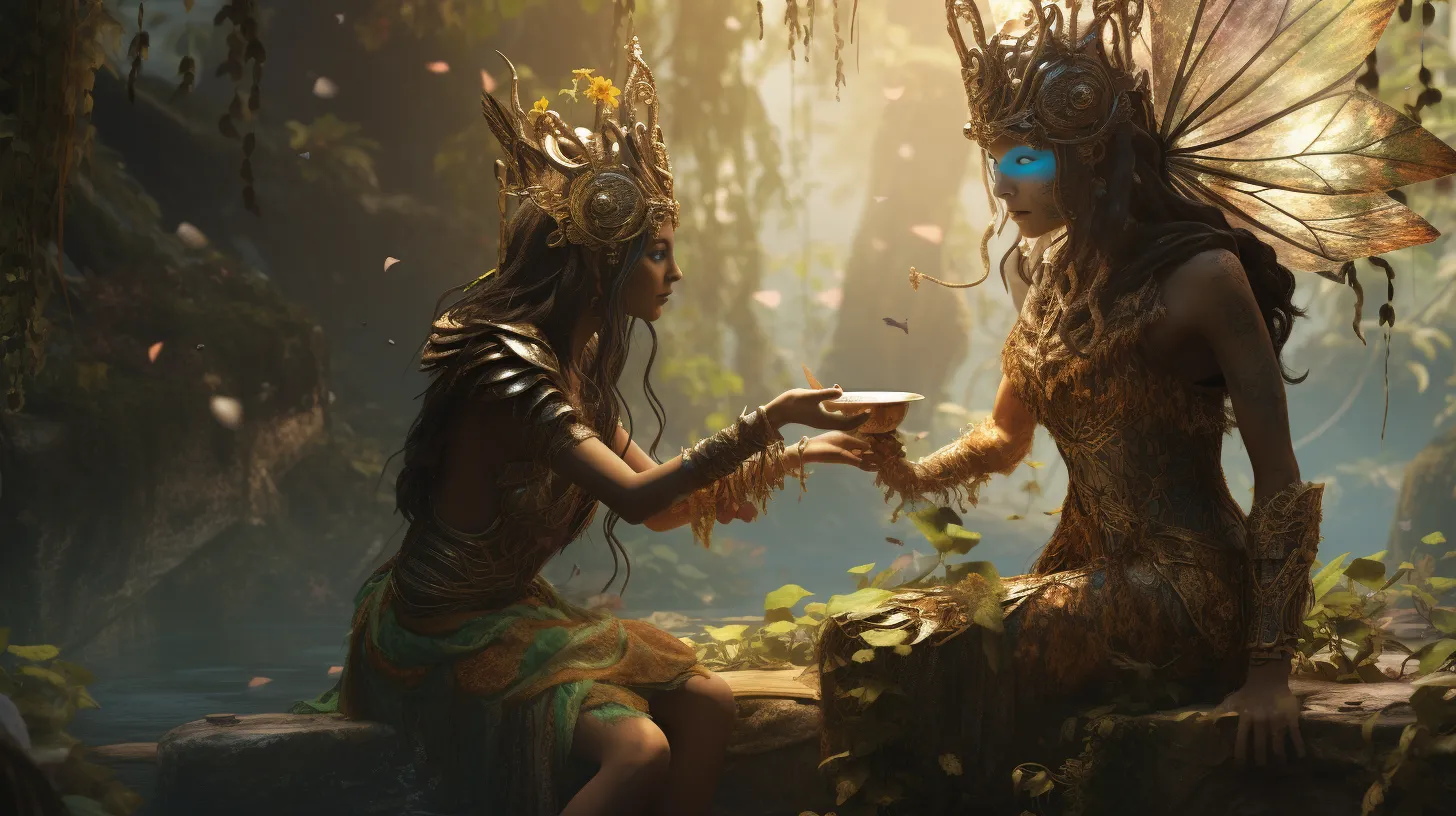
Nomia, a nymph of lesser renown in Greek mythology, had a limited presence in the overall mythological narratives. Her origins are shrouded in ambiguity, with varied accounts of her parentage and lineage. Some sources suggest her as the daughter of a river god, while others attribute her to a lesser-known deity. The identity of her mother also lacks consistency across different renditions.
Despite her limited prominence, Nomia was depicted as a captivating and alluring nymph associated with nature, particularly meadows and flowers. Her interactions and relationships with other characters, including gods and mortal humans, weren’t extensively explored. However, she was occasionally portrayed as a companion to other nymphs and was known to be part of the nymph community.
Although she lacked significant standalone myths or legends, Nomia’s presence in stories often symbolized the beauty of nature.
Nomia’s Appearance and Interactions
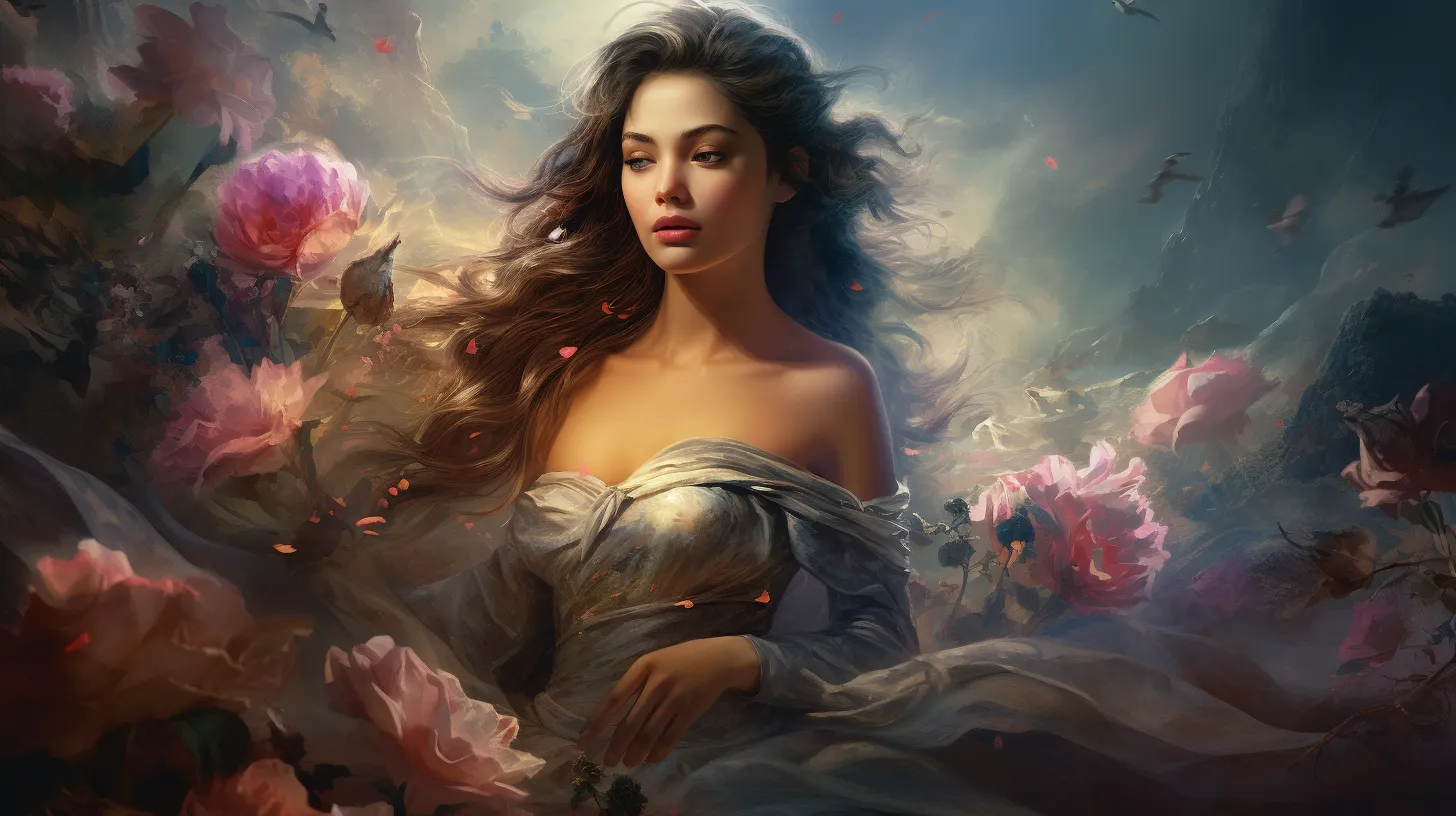
With an enchanting allure and a connection to nature, Nomia’s appearance and interactions portrayed her as a captivating and alluring nymph associated with meadows and flowers.
-
Did Nomia have a special relationship with other nymphs, and if so, how did it influence her character and role in Greek mythology?
-
How did Nomia’s connection to springtime blooming reflect her interactions with gods and mortal humans?
-
In what ways did Nomia’s presence in stories symbolize the beauty of nature, and how did this tie into her relationships with other characters?
-
What were the details of Nomia’s interactions with gods and mortal humans, and did these interactions reveal more about her captivating and alluring nature?
-
How did Nomia’s enchanting features and irresistible charm shape her relationships with other characters in the mythology?

